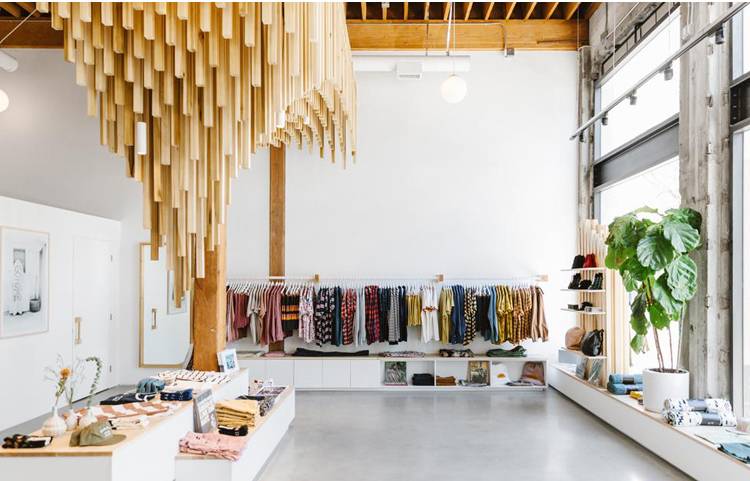Sustainable design is gaining momentum amongst the retailers as they have started understanding the impact their design decisions make on the environment. Besides contributing to the environmental benefits, the sustainable retail design reduces operation costs, enhances brand image and ensures customer satisfaction. A business that is environmentally conscious is also acknowledged by consumers and environmental authorities, which further makes your brand trustworthy and credible.
Owing to multiple benefits that sustainable retail design offers, more and more interior designers are adopting an integrated and sustainable approach to store design. Creating a space that is pleasing, functional as well as sustainable can be challenging for the interior designers. Below are some of the tips that will enable retail owners to reduce their operational costs whilst creating a sustainable in-store experience.
Lighting:
Lighting is a key element that attracts customers, enhances visual quality and contributes to the overall appeal of the retail store. The different lighting including general lighting, signage lighting, display lighting, mood lighting, parking lighting and security lighting also accounts for the major energy consumption in a retail store. However, a lot of energy is consumed due to ineffective and energy-intensive lighting design. By using sustainable lighting alternatives, retail owners can substantially reduce their operational costs whilst maintaining the lighting quality and effect. The traditional incandescent light bulbs and halogens should be replaced with compact fluorescent fixtures. Fluorescent lighting lasts longer whilst emitting less heat compared to the conventional tungsten light bulbs. Designers should also focus on daylighting as it is one of the best energy-saving techniques for the retailers. By placing windows, high open ceilings, reflective surfaces, and other openings, there are sufficient mediums for the natural light to provide effective internal lighting. This results in less utilization of electricity during day time, thus reducing energy costs and environmental impact. Installing skylights with lighting controls is another cost-effective solution that can be used to save energy and maximise sales, as research reveals greater customer satisfaction is achieved with skylight stores. Occupancy sensors that automatically turn off lights or dim the light when a space is unoccupied can reduce energy costs by reducing energy waste.
HVAC:
HVAC system is one of the most complex and critical elements responsible for substantial energy consumption. As many internal factors such as temperature, air quality and humidity depends on the HVAC system, it is very vital to have a well functioning HVAC system. The first step to minimize energy consumption is by getting right sized HVAC equipments as incorrect sizes lead to a considerable amount of energy wastage. Installing Variable Speed Drives (VSDs) on air-conditioning systems will enable you to control the speed of the fan to reduce the loss of heat during winters and gain the heat during summers, use well-sealed double glazing windows, proper window coverings and insulated roof spaces and ceilings. Install switchers or timers that turns of the HVAC system when the store is unoccupied. The system should be regularly cleaned to increase efficiency, reduce energy and enhance its operating life.
As sustainable retail design is the need of the hour, retail owners should hire a professional interior retail design company that will integrate the elements of sustainability in its design approach.


